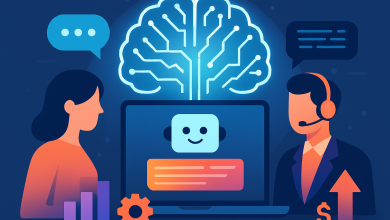
For nearly two decades, cloud computing has been the dominant paradigm in enterprise IT, transforming how organizations consume and deploy technology resources. But the massive explosion of data generated at the edge—far from traditional data centers—has revealed an uncomfortable truth: a cloud-centric approach is neither economically feasible nor technically practical for many of today’s computing needs. The bandwidth constraints, latency requirements, and sheer economics of moving enormous data volumes simply don’t add up.
The numbers speak for themselves. Global spending on edge computing solutions will reach nearly $261 billion in 2025 and is projected to grow at a compound annual growth rate (CAGR) of 13.8%, reaching $380 billion by 2028. This remarkable growth signals that edge computing isn’t theoretical technology gathering dust in R&D labs—it’s delivering real value across virtually every industry.
After working with organizations across multiple verticals, I’ve identified the pattern that separates successful edge adopters from the rest. The enterprises that thrive with edge computing share three key characteristics: cloud maturity, a data-driven decision-making culture, and distributed operations. As these capabilities become more widespread, we’re witnessing edge computing accelerate from experimental deployments to mission-critical infrastructure.
Let’s explore how leading industries are leveraging edge computing to transform their operations and customer experiences. Each faces unique challenges that cloud-only approaches can’t solve.
Retail & Services: Leading Edge Investment
It shouldn’t be surprising that the retail sector now accounts for the largest share of investments in edge solutions, representing nearly 28% of total global spending in 2025. This leadership position makes perfect sense given retail’s unique combination of high customer expectations, distributed operations, and data-rich environments.
In retail environments, customer experience depends on systems that can respond instantly, even when network connectivity is compromised. Edge computing powers everything from inventory optimization to personalized shopping experiences. These capabilities aren’t just additional features—they’re competitive necessities in a sector where customer experience is paramount.
Manufacturing: Edge-Enabled Operational Excellence
According to IDC, manufacturing represents the second-largest sector for edge computing investment, with compelling economics driving adoption. The factory floor generates immense amounts of data that needs immediate processing for quality control, predictive maintenance, and process optimization.
One interesting trend I’ve observed is that smaller manufacturing companies often move more quickly with edge AI deployments than their larger counterparts. This suggests that edge computing’s ability to deliver immediate operational improvements makes it accessible and valuable to mid-market manufacturers, not just global enterprises.
The most compelling manufacturing applications combine edge computing with AI to enable real-time quality control, energy optimization, and process acceleration. One of the fastest-growing application areas is process acceleration, which includes robot optimization, discovery and mining, and digital twin optimization, as manufacturers seek to increase efficiency and reduce costs.
Energy & Resources: From Pioneers to Innovators
The energy sector—particularly oil and gas companies—was among the earliest adopters of edge computing for good reason. These organizations operate in environments where connectivity is limited, data volumes are massive, and real-time decisions have significant safety and financial implications. Equally important, the industry faces intense regulatory and public pressure to improve sustainability, with edge computing providing the tools to monitor and reduce emissions, optimize energy usage, and support renewable energy integration.
Nowhere is the impact of edge computing more evident than in energy production. Many oil and gas field services companies have transformed their drilling operations using edge computing, achieving remarkable precision and speed while significantly improving safety. The results are impressive—some operations have seen a 95% reduction in data processing and reporting times.
With edge AI deployments, these organizations can instantly process sensor data, video feeds, and telemetry information, making split-second decisions that would be impossible with cloud processing alone. Risk management applications like predictive maintenance, safety compliance, and anomaly detection are becoming standard practice in the energy sector, with many companies expanding these implementations across their operations.
Automotive & Transportation: Connectivity in Motion
The automotive industry is rapidly transforming into a technology-first sector, with vehicles increasingly becoming computer networks on wheels. Edge computing is essential to this transformation, enabling everything from manufacturing optimization to service center operations.
Edge implementations allow mechanics to update vehicle software, read diagnostic information, and resolve issues faster than ever before. The entire software stack needed for vehicle diagnostics runs at the edge, ensuring consistent performance regardless of internet connectivity challenges.
Maritime & Shipping: Computing at Sea
Perhaps no vertical better illustrates the necessity of edge computing than maritime shipping. When vessels operate hundreds of miles from shore, cloud connectivity becomes impossible or prohibitively expensive. Yet these ships generate enormous amounts of operational data that require immediate processing.
Major shipping leaders are embracing edge computing to transform their fleet operations. Maersk, one of the world’s largest container shipping companies, recently announced its deployment of edge orchestration across its fleet to power its next-generation IoT connectivity platform. These implementations enable everything from real-time container tracking and cargo monitoring to providing private wireless networking on ships. Without edge computing, these capabilities would be impossible to deliver reliably at sea.
AI: The Edge Computing Killer App
While edge computing delivers value through many applications, AI is rapidly emerging as its most transformative use case—the true killer app for edge computing. In my discussions with technology leaders, multimodal AI (combining speech, text, and vision), speech recognition, and large language models consistently emerge as the most common AI workloads being deployed at the edge.
The combination of AI and edge computing creates possibilities that neither technology could enable alone. These possibilities include autonomous systems that can perceive and interact with the physical world, natural language interactions with machines in limited-connectivity environments, and immediate processing of video feeds for applications ranging from quality control to security.
Organizations clearly recognize the value of these capabilities, and executives say their edge AI budgets are increasing substantially year over year. This isn’t cautious experimentation—it’s a strong vote of confidence in the transformative potential of edge AI.
The Edge Imperative
Edge computing is no longer optional for organizations with distributed operations—it’s a strategic necessity. IDC projects that financial services will see the fastest growth in edge spending over the next five years, with a CAGR exceeding 15%. By 2028, services segments (including provisioned and professional services) will surpass hardware spending.
What’s driving this evolution? Organizations increasingly want the benefits of edge computing without the complexity of building and maintaining the infrastructure themselves. The most successful implementations begin with a single use case but quickly standardize on an edge platform that can address multiple requirements through consistent security policies, simplified management, and ecosystem integration.
The message for business leaders navigating this shift is clear: edge computing isn’t just another technology initiative—it’s a fundamental shift in how your enterprise collects, processes, and acts on data. Organizations that recognize this shift and adapt their technology strategies now will lead in the next era of computing—one that balances cloud and edge capabilities to deliver enhanced security, operational efficiency, and customer experience.
The edge is where the physical and digital worlds meet, and increasingly, it’s where your competitive advantage will be defined.





